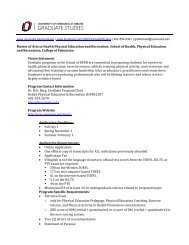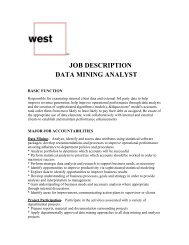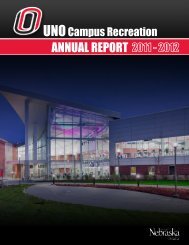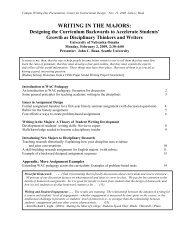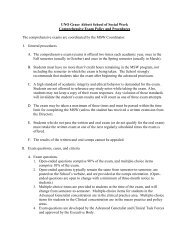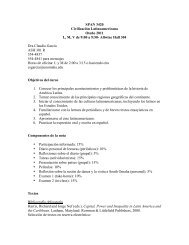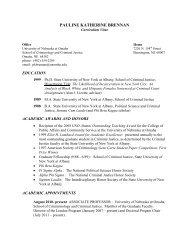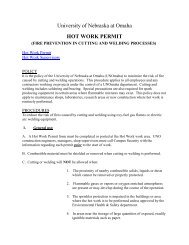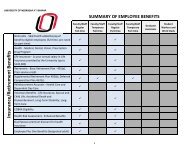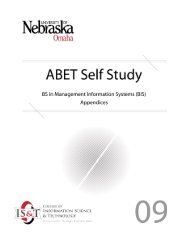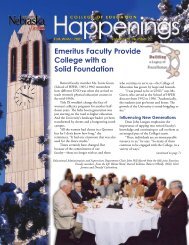Bloodborne Pathogen Exposure Control Plan - University of ...
Bloodborne Pathogen Exposure Control Plan - University of ...
Bloodborne Pathogen Exposure Control Plan - University of ...
You also want an ePaper? Increase the reach of your titles
YUMPU automatically turns print PDFs into web optimized ePapers that Google loves.
1. Engineering and workplace controls (see 2-8 below) must be used to eliminate or minimize<br />
exposure. Personal protective equipment, i.e., gloves, masks, faceshields, must be used whenever<br />
there is an exposure potential.<br />
2. Hand-washing facilities must be available when feasible.<br />
A. Employees must wash their hands immediately upon direct skin contact and always after<br />
removal <strong>of</strong> gloves or other protective equipment.<br />
B. Flush eyes and/or mucous membrane areas immediately with water if those areas have come<br />
into contact with blood.<br />
3. Sharps (needles, scalpels, razor blades, contaminated glass) procedures:<br />
A. Do not bend, recap, or remove from syringes unless it can be demonstrated to the <strong>Bloodborne</strong><br />
<strong>Pathogen</strong> <strong>Exposure</strong> <strong>Control</strong> Committee that no other feasible method exists or that such action is<br />
required by a specific medical procedure.<br />
B. Shearing or breaking <strong>of</strong> contaminated needles is prohibited.<br />
C. Never reach into or force items into a sharps container. Containers must be accessible and<br />
located as close as possible to the area where sharps are used or found. They must be kept<br />
upright throughout use, replaced routinely, and not be allowed to overfill.<br />
D. Contaminated reusable sharps must be placed in containers that are puncture-resistant,<br />
labeled, and leakpro<strong>of</strong> on sides and bottom until properly reprocessed. Storage and processing<br />
procedures must not be used which require employees to reach by hand into these containers.<br />
4. Eating, drinking, smoking, applying cosmetics or lip balm, and handling contact lenses are<br />
prohibited in areas where there is a reasonable possibility <strong>of</strong> exposure.<br />
A. Food and drink must not be kept in refrigerators, freezers, shelves, cabinets, or countertops or<br />
benchtops where blood or other potentially infectious materials are present.<br />
B. Mouth pipetting/suctioning <strong>of</strong> blood or other potentially infectious material is prohibited.<br />
5. All procedures involving blood or other potentially infectious materials must be performed in<br />
a manner that minimizes splashing, spraying, spattering, and generation <strong>of</strong> droplets.<br />
6. Specimens <strong>of</strong> blood or other potentially infectious material must be placed in a container that<br />
prevents leakage during collection, handling, processing, storage, transport, or shipping.<br />
Specimen containers must be labeled and closed prior to being stored or transported when<br />
universal precautions are not utilized. Specimen containers shipped <strong>of</strong>f campus must be labeled.<br />
A. The primary container must be placed in a labeled or secondary container that prevents<br />
leakage when outside contamination <strong>of</strong> the primary container occurs.




